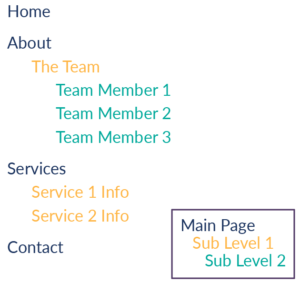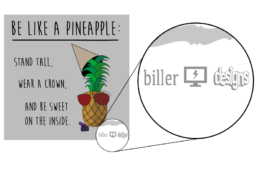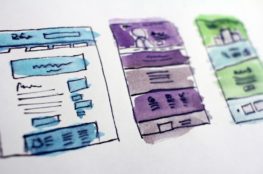Well, it’s time.
You know that you need to have an online presence to help support your business, but you’re not really sure how to go about getting one. Or, it could be that your current website just needs to be freshened up. What do you do?
You could make a go of it yourself. There are lots of user-friendly drag and drop editors, but it will probably take a bit of time to get familiar with the platform to set it up properly. You could definitely go with a designer (we can recommend a pretty good one). They are already up to speed on how the platforms work and how best to set up everything on the technical side. They’re also generally much faster and you’ll get your very professional and wonderful site up and running very quickly. Ultimately, it’s your call for what’s best for your business.
Either way, you’re going to have to get yourself organized. If you’ve decided to work with a web designer, congratulations! Hopefully, they will have a plan to discover the best setup for your website, get all of the information about your business, and put together a fantastic project for you. Even if they don’t have a point by point plan, they are still going to need some information from you. At Biller Designs, we do an initial discovery session where we find out everything we can about your business. Then, based on our findings and your business goals, we set up a shared Google document that we call a Content Plan to help make sure all of the information you want on your website makes it on there accurately.
In the meantime, I’m going to give you some helpful hints on how to decide what needs to be on your website, how to organize it, and where to find content if you don’t have enough to fill your site. This is helpful whether you’re DIYing your website or working with a designer.
 I will talk more in depth about the Content Plan next week, but before you get too in the weeds, it’s good to have an overall idea of what information you want on your website. Once you have a basic idea, you can start to organize the pieces of information. Finally, you can figure out what specific content goes on each individual page.
I will talk more in depth about the Content Plan next week, but before you get too in the weeds, it’s good to have an overall idea of what information you want on your website. Once you have a basic idea, you can start to organize the pieces of information. Finally, you can figure out what specific content goes on each individual page.
What’s the Big Idea?
Until you actually have to sit down and write it, thinking about what information needs to go on your website sounds pretty easy. “Sure,” you think, “this will be super easy and fast.” Then, four hours later, you’ve consumed six cups of coffee, torn yourself away from social media a dozen times, Googled, “What goes on a website,” and still only have a sentence or two written down. Let’s break it down.
Pages
Most websites will have between 4 and 6 primary pages. Home, About, Contact, and Products or Services are some examples of items that most businesses will need. I like to start with those when listing the pages I will need on my site, and add additional pages underneath them as I go. Once you’ve listed all of the pages you need, it’s time to organize them into navigation.
Navigation
You don’t want to get too crazy with the number of navigation tabs, so keeping your main navigation limited to your primary pages is a good rule of thumb. What you’re creating is essentially a hierarchical organization of all of your website’s planned pages. If you end up with pages that clearly need their own tab, you can adjust for that, too. That’s another reason that it’s important to plan it out beforehand or you waste a lot of time with your designer trying to figure out how your site should be set up. The final list of planned pages is what you will use to gather the content for each page.

Content
When you are deciding what information goes on which page, the most important piece of the puzzle is clarity. It needs to be very clear to a person who has never been to your website where everything is and how to find the information they need. Things like return policies, shipping costs, contact information, and business hours should be located in multiple obvious places. After all, if your customers or clients can’t find information on your website quickly and easily, they will just go somewhere else. Your content is the most important piece of your website, but don’t worry, because like I said earlier, I’m going to go over this section in a lot more detail next week.
All of these things are just as important for a new business as an established one. An established business just refreshing their website has information on their current site to work with, though it often needs updating. When building a brand new business, you’re going to have to potentially create a lot of verbiage around your mission, your services, your products or services, your pricing, and (gasp!) your bio! This is critical to conveying your business to your potential customers and it is not something that can be done in an afternoon. Make a plan, set goals to finish one page per day or work with a business coach to get your language just right. Your website will thank you.
-CB <3



